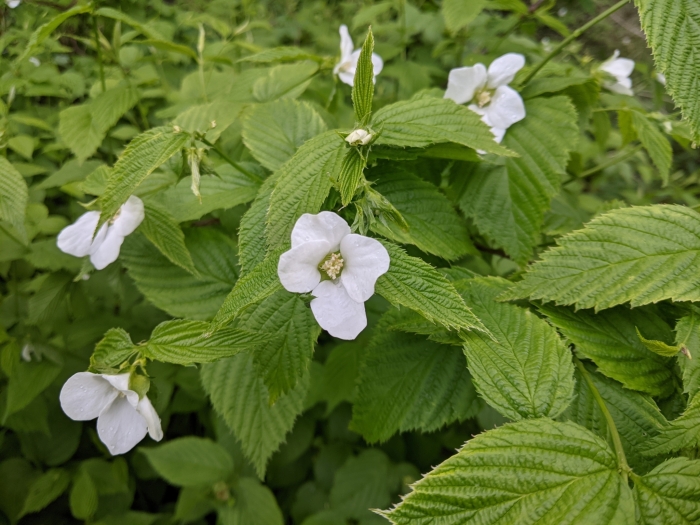Black Jetbead
(Rhodotypos scandens)
Black Jetbead (Rhodotypos scandens)
/
/

bemma
CC BY 4.0
Image By:
bemma
Recorded By:
Copyright:
CC BY 4.0
Copyright Notice:
Photo by: bemma | License Type: CC BY 4.0 | License URL: http://creativecommons.org/licenses/by/4.0/ | Rights Holder: bemma | Publisher: iNaturalist | Date Created: 2021-05-18T13:44:59-07:00 |
























































Estimated Native Range
Summary
Rhodotypos scandens, commonly known as Black Jetbead, is a deciduous shrub native to woodland edges and scrublands in East Asia, particularly in China, Japan, and Korea. It typically grows to a height of 2–5 meters with a similar spread, featuring arching branches and a rounded form. The leaves are simple, opposite, and serrated, providing a lush green backdrop for the flowers. The white flowers, which bloom from late spring to mid-summer, are four-petaled and modestly showy, attracting pollinators. Following flowering, the plant produces distinctive clusters of 1-4 shiny black drupes, each 5–8 mm in diameter, which can persist into winter, adding visual interest.
Black Jetbead is appreciated for its ease of maintenance and adaptability to a range of garden settings. It can be used as a border planting, for screening, or as part of a mixed shrubbery. While it prefers full sun to part shade, it is tolerant of a variety of soil conditions, though it thrives best in well-drained soils. Regular pruning can help maintain its shape and encourage more prolific flowering. However, gardeners should be cautious as Rhodotypos scandens is known to be invasive in some regions, such as parts of eastern North America, where it can outcompete native vegetation. It is advisable to check local regulations and consider native alternatives if it is listed as invasive in your area.CC BY-SA 4.0
Black Jetbead is appreciated for its ease of maintenance and adaptability to a range of garden settings. It can be used as a border planting, for screening, or as part of a mixed shrubbery. While it prefers full sun to part shade, it is tolerant of a variety of soil conditions, though it thrives best in well-drained soils. Regular pruning can help maintain its shape and encourage more prolific flowering. However, gardeners should be cautious as Rhodotypos scandens is known to be invasive in some regions, such as parts of eastern North America, where it can outcompete native vegetation. It is advisable to check local regulations and consider native alternatives if it is listed as invasive in your area.CC BY-SA 4.0
Plant Description
- Plant Type: Shrub
- Height: 3-6 feet
- Width: 4-9 feet
- Growth Rate: Moderate
- Flower Color: White
- Flowering Season: Spring, Summer
- Leaf Retention: Deciduous
Growth Requirements
- Sun: Full Sun, Part Shade
- Water: Medium
- Drainage: Medium
Common Uses
Border Plant, Salt Tolerant, Showy Flowers
Natural Habitat
Native to woodland edges and scrublands in East Asia
Other Names
Common Names: Jetbead, Faux-Corête, Schersminros, Ji Ma, 병아리꽃나무
Scientific Names: , Rhodotypos scandens, Rhodotypos kerrioides, Rhodotypos tetrapetala, Corchorus scandens, Kerria tetrapetala,
GBIF Accepted Name: Rhodotypos scandens (Thunb.) Makino